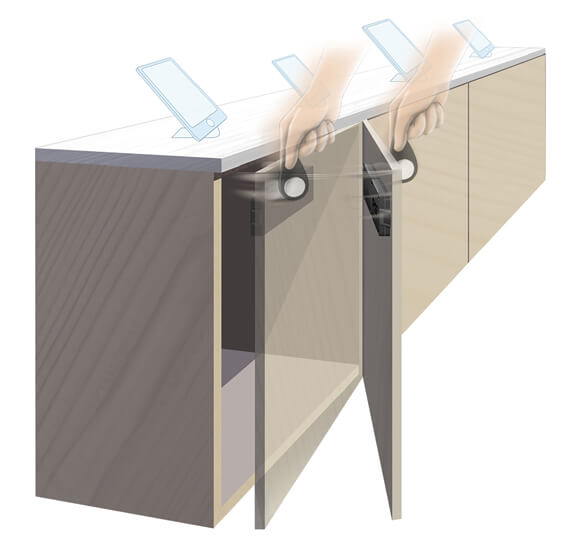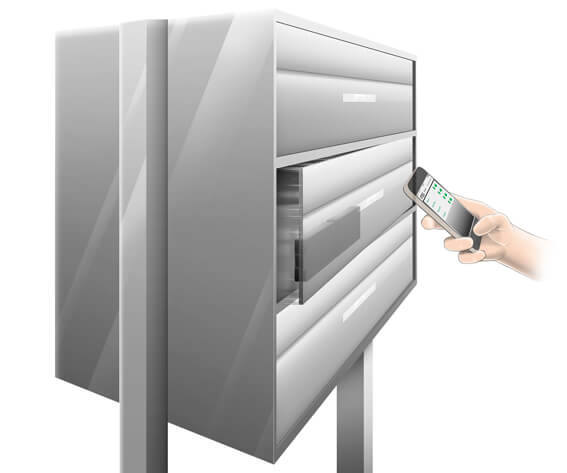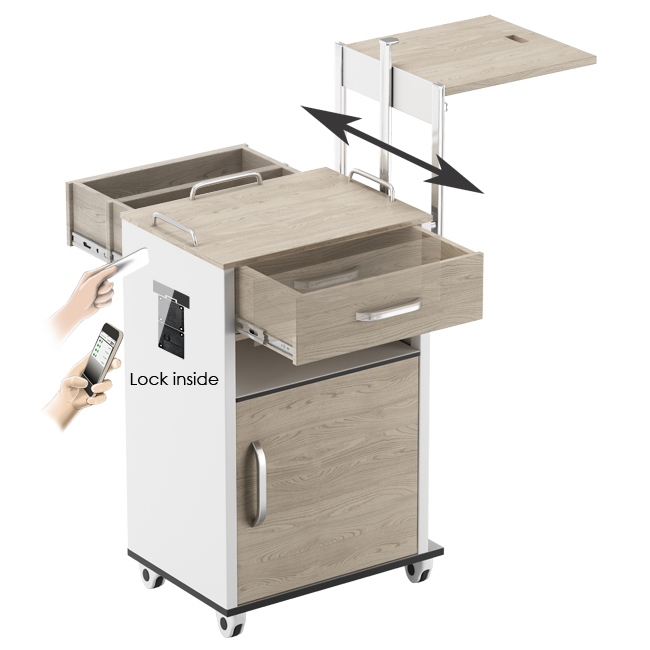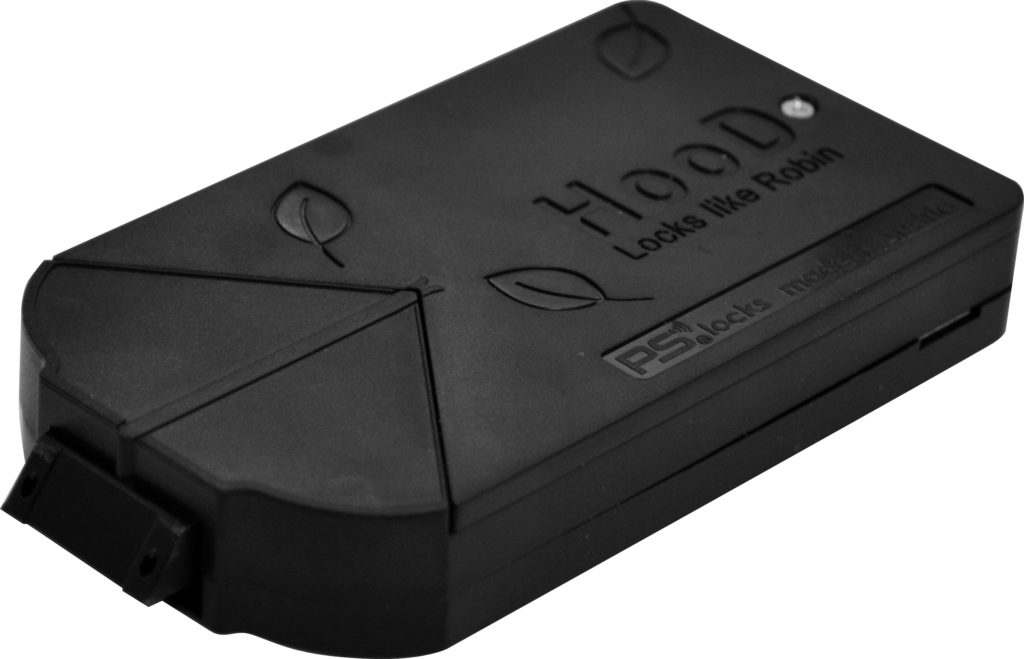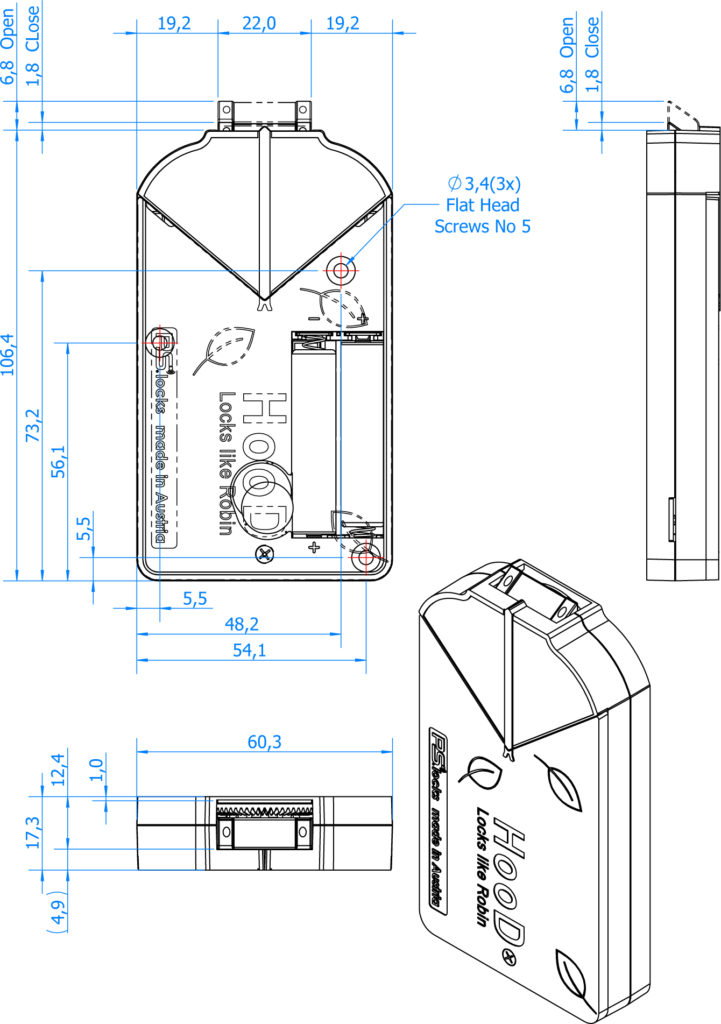HooD- flat, flexible and robust lock
HooD - For furniture and lightweight doors
The HooD furniture lock is very robust thanks to its low height and internal gearbox and can be used in a variety of ways. The electronics are connected by a cable and powered by 2 AAA batteries.
The HooD lock is used for letter cabinets, furniture and glass doors.
Drawers can be locked in 2 directions with an additional rail.
This is mainly used for patient cabinets in hospitals.
(Hospital bedside cabinets with two locking directions)
Bluetooth
The locks are controlled via the free PSlocks app.
The locks are also optionally available with RFID or 12V.
Article number: HooD BT B
HooD "pull" interior doors
This extension makes it possible to unlock inward-opening doors with a lever.
Without a cell phone, cards or electricity.
The bolt is pulled to the side and the lock can then be pulled open inwards.
Hence the name “pull”.
Safety: Please observe the safety instructions below.
Certifications: Please observe the country-specific regulations and specifications before using a HooD lock.
Possible areas of application include small storage rooms in stores, light doors at trade fairs and concealed doors and rooms.
Article number: HooD BT pull B
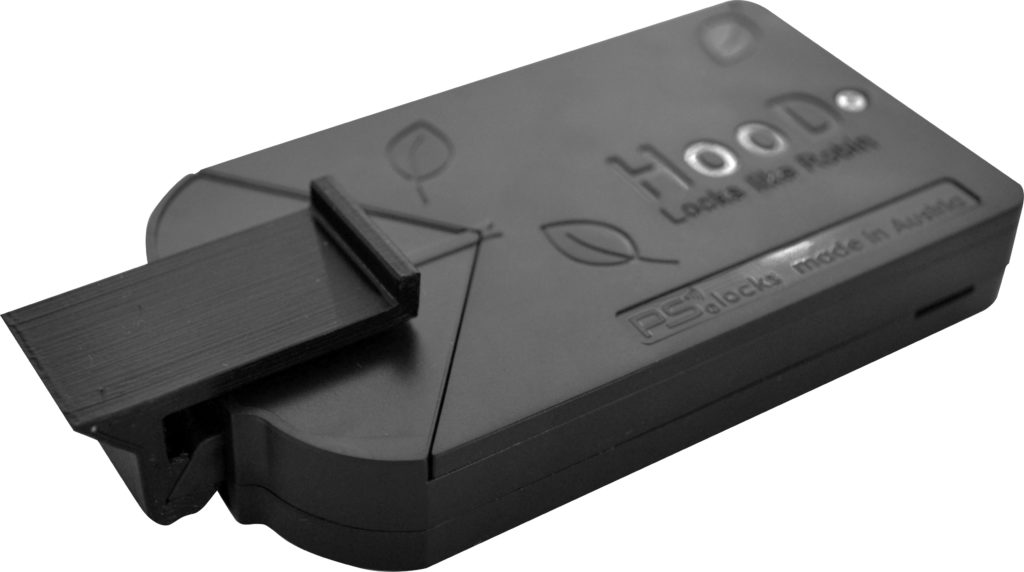
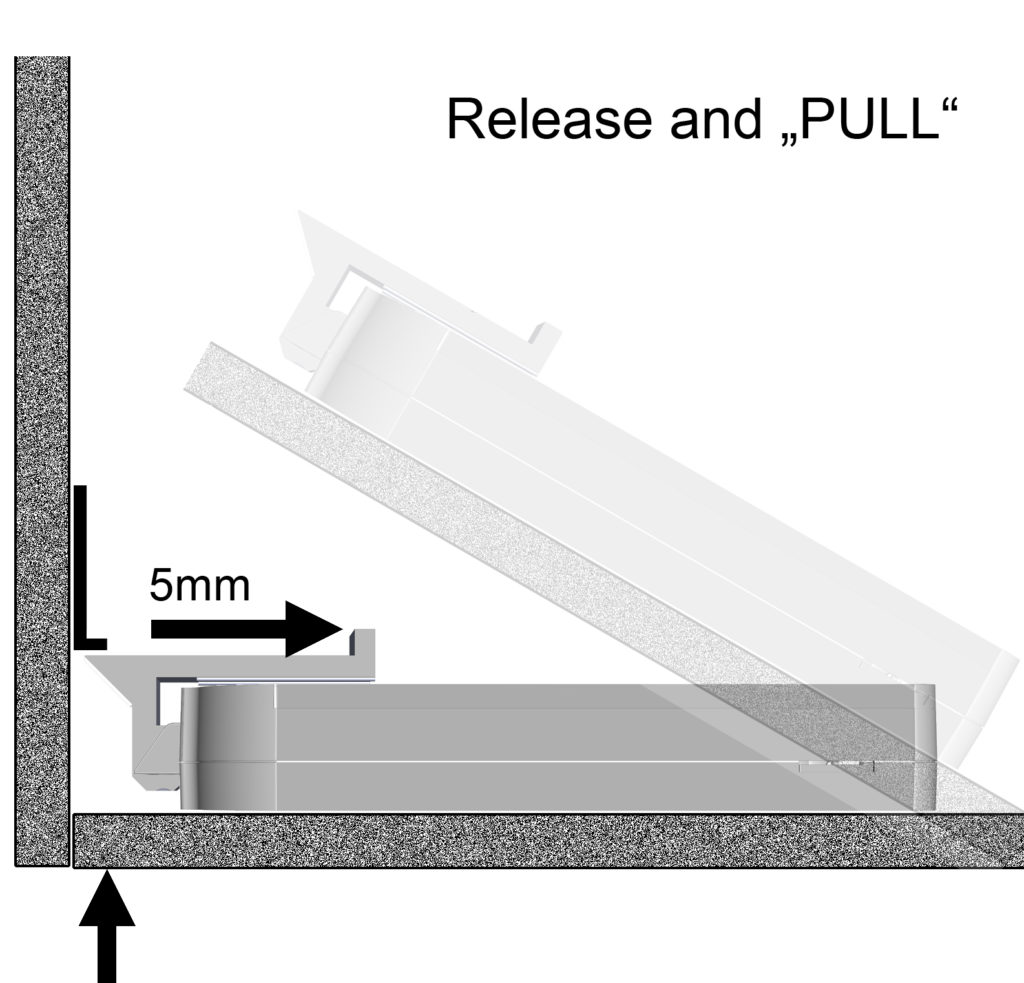
HooD "push" interior doors
This extension makes it possible to unlock doors that open outwards with a lever.
Without a cell phone, cards or electricity.
The bolt is pulled to the side and the lock can then be pushed outwards.
Hence the name “push”.
To open the door, we recommend using a TIP ON or PUSH TO OPEN spring mechanism which is mounted 5mm too far back and therefore only works as a spring mechanism.
Safety: Please observe the safety instructions below.
Certifications: Please observe the country-specific regulations and specifications before using a HooD lock.
Possible areas of application include small storage rooms in stores, light doors at trade fairs and concealed doors and rooms.
Article number: HooD BT push B
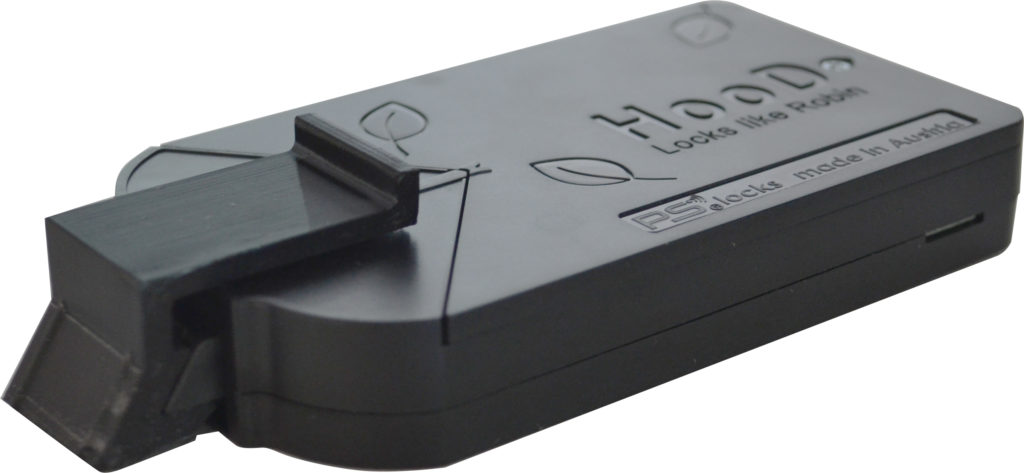
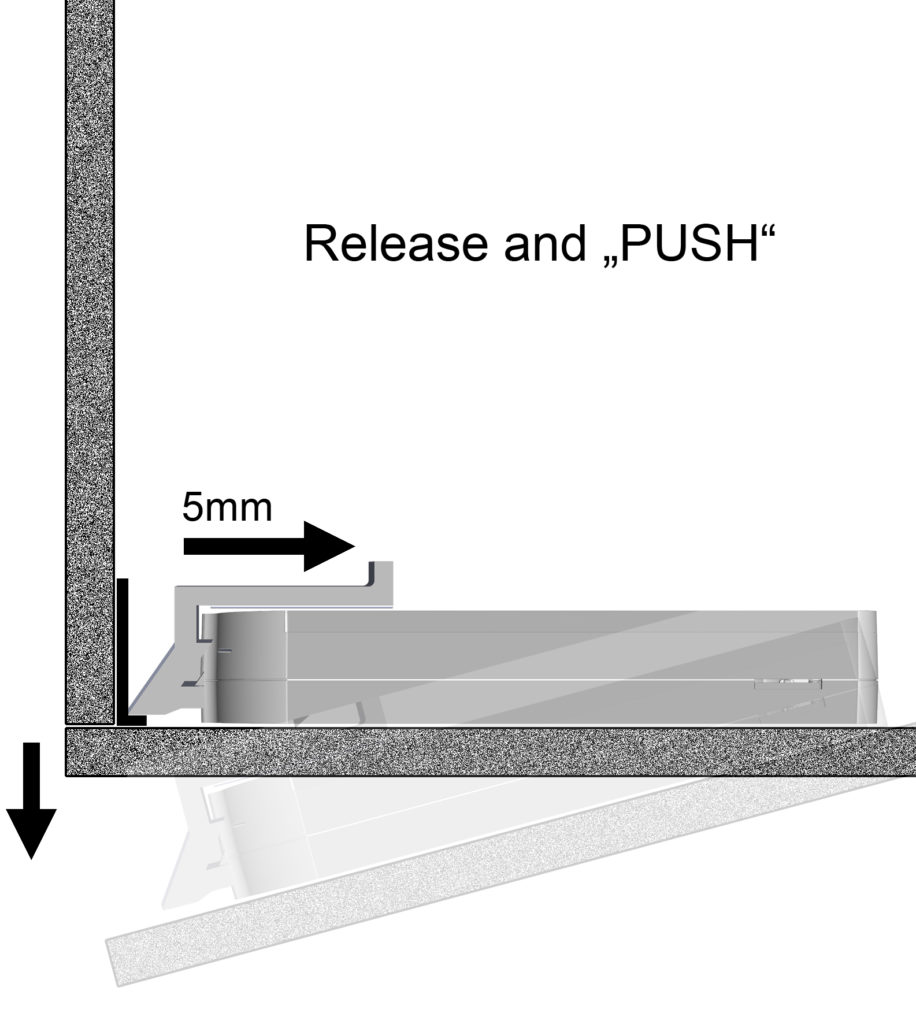
Security for doors
The safety of interior doors, especially with regard to emergency unlocking, is an important aspect to ensure quick and safe exits in an emergency. Here are some points you should bear in mind:
1. emergency release systems: Ensure that all interior doors used in critical areas or concealed rooms are equipped with an effective emergency release system. These systems should be easy to use and quickly accessible in an emergency.
2. regular inspection: Have the emergency release systems checked regularly by specialists to ensure that they are working properly. This should be part of a regular maintenance schedule.
3. marking: Emergency exits and emergency releases should be clearly marked so that they can be found easily in an emergency. Use clearly visible signs and symbols. Make sure that the HooD lock remains visible in an emergency.
4. training: Inform all persons who have access to the rooms about the operation of the emergency releases and the emergency procedures. Regular training and exercises can help to increase safety.
5. accessibility: Make sure that the emergency releases are not blocked or covered by furniture or other objects. Access should be free at all times.
By observing these points, you can significantly improve the security of interior doors and the effectiveness of emergency releases.

